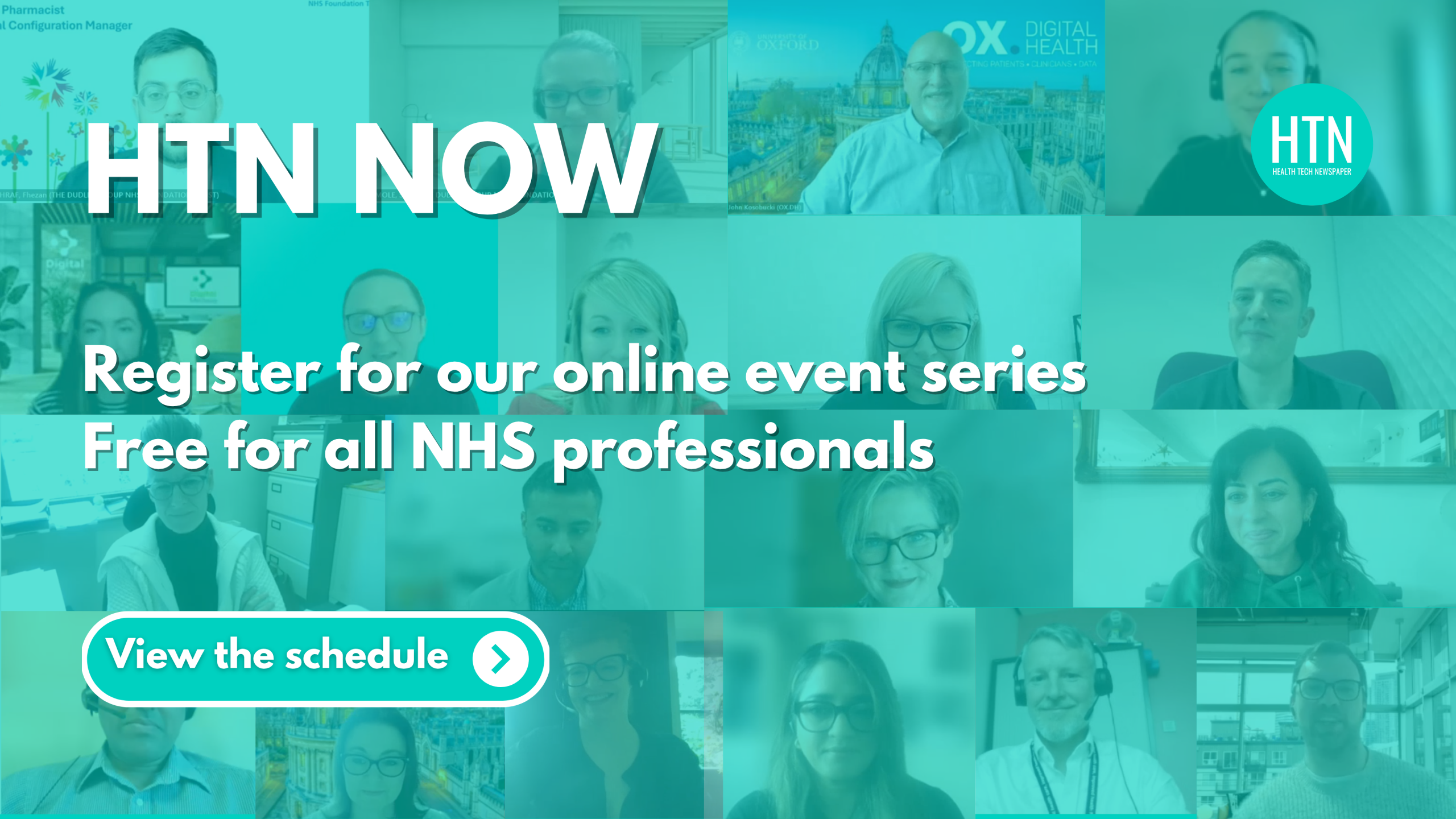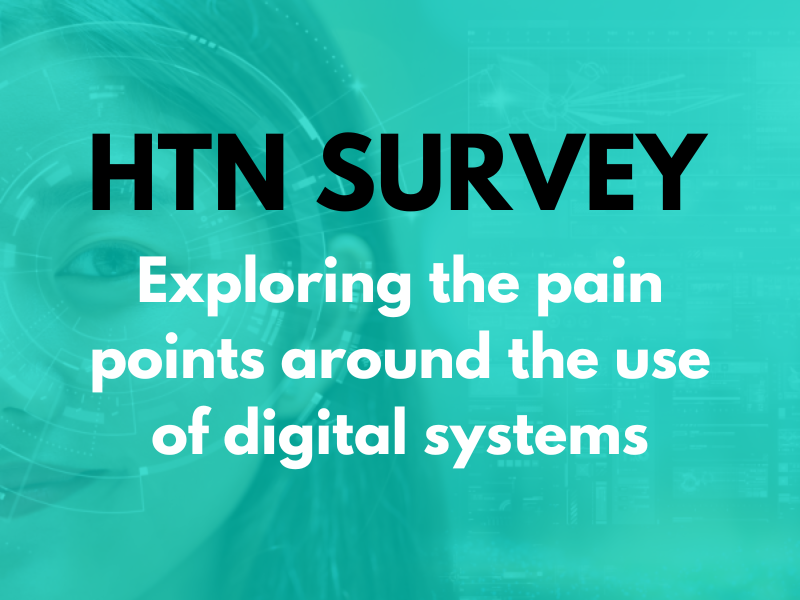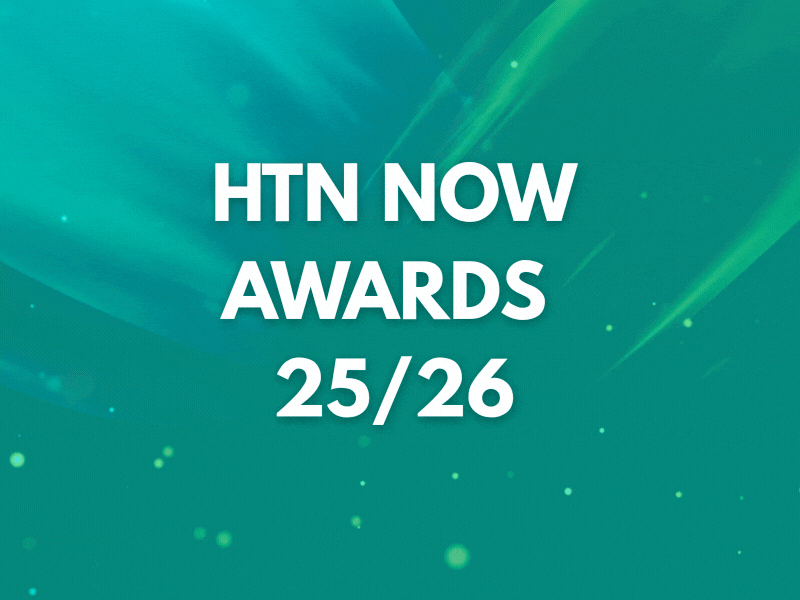An expert panel including Tom Davis, UK country manager and medical director at Livi, Dan Bunstone, clinical director at Warrington ICB, and Ananya Datta, associate director of primary care digital delivery at South East London ICS (SEL), joined us for a recent HTN webinar exploring the role of digital in empowering patients.
The discussion considered what “good” looks like for digital patient journeys, the ways digital is currently being used to empower patients, the successful use of digital tools in helping patients to take control of their own health, and key challenges around engagement, training, capacity and accessibility.
“In my role at SEL, we manage a portfolio with GP practices in primary care and their core services and technology, such as clinical systems, as well as transformation like the NHS app, online consultations, and video consultations,” Ananya shared. “We are also supporting wider primary care, which is community, pharmacy, working to improve patient journeys from practice to pharmacy. One of the puzzles we have is adult social care, collaboration, digitising social care records, and linking everything back for patients and our population.”
Tom also gave us an introduction to himself and his role, including his background as a GP, and his current position with Livi focusing on the UK. “Livi has been established for the last five or six years in the UK as a digital health provider,” he said, “and we’re part of the Kry family, Kry being the largest digital-first healthcare provider in Europe, based mainly in Sweden where we’ve got a network of 60 digital physical units supported by a national digital service.”
“I’m also a GP by trade,” said Dan, “and as well as working as clinical director for Warrington Innovation Network I’m chief medical officer at an urgent care provider, and I lead Confed’s digital and data group, so I’m deeply involved in the theory and hypothesis around how digital and data can support, but I have a history in delivery too.” Recently, he worked with BT to create a health app focused on lifespan, he continued, “so I’ve been involved in the whole spectrum of digital and health”.
Examples of successful patient empowerment
In SEL, one of the projects Ananya has worked on recently has involved streamlining the online journey for patients, looking at multiple digital platforms, online consultations, and telephony. “Last year we implemented one platform for almost all of our practices,” she said, “so 87 percent of our practices out of 200 use one platform, streamlining the journey, and at the same time improving websites so the look and feel would be very similar for patients, even if they log in through the NHS app, which we are planning to have as our single front door.”
For telephony, SEL has started helping practices implement a triage process “very similar to their online consultation journey”, Ananya continued. “Meaning whichever channel patients use to approach practices, they will have a very similar experience. We’ve seen a lot of great patient feedback based on the pre-implementation versus the post-implementation timeframes.”
“One thing that this highlights for me is that digital inclusion has to mean that the digital is part of the integrated healthcare provision, not just a bolt-on,” Tom considered, “and I think that’s the key difference in our Swedish model.” In Sweden, Kry’s 60 physical practices vary from rural to central locations, supported by a national digital service featuring an integrated care model using a digital platform to support care. “We haven’t forced patients to access our services through the digital portal, but we have enabled them by the experience to see that it is the most effective way.”
It’s one ecosystem with all units connected to the digital service, Tom went on, “and we found that by managing patient need through a right place, first time approach, with layers of the national digital service with a range of clinicians, a local digital service which is connected to the physical unit, and then physical care at the locality level, we’re managing care much more cost effectively”. Offloading 30 to 50 percent of patient need to digital services provides physical units more capacity to be proactive about chronic disease and urgent care, “and it comes back to digital being part of integrated care – we see benefits for accessibility, staff morale, and costs”.
“That really resonates with me,” Dan said. “Digital feels like a bolt-on and a nice-to-have, but although it’s innovative, we need to get it to a place where it’s more mainstream – it might not fit for everybody, but for many it offers massive benefits.” The national narrative tends to be skewed toward people demanding face-to-face appointments, but the retail experience shows that people have been using digital for things like tracking deliveries for decades. “Health is very far behind,” he continued, “so I know my Amazon delivery is eight stops away, but I have no idea where my chest X-ray is, or where my appointment is in the queue.”
Dan’s team has recently been working on a hypertension project in Warrington, aiming to better manage hard-to-reach cases and to use digital to enable the better treatment of patients. “We sent them out a bluetooth-enabled blood pressure device, and our whole team were remote. The feedback from patients was amazing, and it was proactive care in their own homes.” The project treated 1,200 patients to target and dropped QRISK by over three percent, preventing around 35 to 40 heart attacks and strokes. “We need to get more to that place, and I think companies like Livi and BT can help support us to do that – it’s low cost and lifestyle interventions that can get us there.”
Overcoming challenges
Ananya talked about the challenge of having a wide range of patient-facing platforms for different conditions, and how SEL is keen to see whether all of these providers could eventually integrate into the NHS app, further streamlining patient journeys. “I think we still face some basic barriers in terms of access in London,” she said. “We have different deprived areas, and where we have data there is a correlation in terms of where the first language is not English – not all apps or platforms offer translation, or where it is offered, it’s perhaps not always safe.” Awareness is the biggest challenge, however, Ananya continued, “because people don’t know that these platforms and digital tools are available”.
There are also technical issues with platforms and features which need to be attended to as digital is developed in healthcare, Ananya noted. “For example, with carer proxy access to the NHS app, because they still do not have access to the dependent if the dependent is from another practice.”
In Sweden there are many examples of communities that are isolated or not digitally confident, Tom shared, “and I think it’s incumbent upon us as healthcare providers to think innovatively about how we support those communities – it might be that having access to a clinician who is hundreds of miles away is better than having no care at all”. There are some good examples of drop-in clinics for elderly patients to support them with using and getting benefits from the Kry app, he went on, “but I think we also need to think outside of the box, at libraries, shopping centres, and so on, so those who don’t have digital access can get those benefits”.
Ten years ago in healthcare the conversation was broadly the same, Tom considered. “We shouldn’t expect our patients to conform to what we think they need to do – we need to understand our patients and their communities, and help them achieve digital access, because most people will become empowered if you give them the opportunity. We’ve maybe assumed for too long that it’s up to our patient, but we as healthcare providers need to think differently.”
“I again would like to agree with Tom’s point,” Dan said, “as people are super keen to be empowered, but we as an NHS system risk being too paternalistic about what patients will or won’t like, or what they will or won’t be able to do. That’s nonsense. People are using digital across the board for their banking and pretty much everything now, and for isolated communities or those who are housebound, you could argue there’s a much bigger incentive.” Whilst digital can be accessible, it may not be the solution for everybody, and it “cannot be a cure-all”, Dan continued, “but we shouldn’t slow down digital progress because we can’t have 100 percent of population coverage”.
With the hypertension project, there was a lot of work around training people to work with the system that increased engagement tenfold, Dan told us. “There are a lot of simple things you might not consider, like people not knowing whether they have a smartphone, that are really easy to forget when you’re sat in digital at the cutting edge. Although we need that support, we need to keep moving, because there are massive opportunities here, too.”
Supporting engagement and measuring value
Ananya shared some work underway in SEL with local authority and VCSE colleagues to support people with digital, as well as work with practice teams to invite patients to come in on set days, and a leaflet campaign in places like colleges and schools to promote available tools and platforms. “This generation is more digitally savvy, so if they know, they can also help their family members, eventually leading to much more penetration in terms of a wider range of people accessing digital.”
SEL has a dedicated digital inclusion lead, who is working with each of the boroughs to develop a local plan, Ananya highlighted. “It’s not always an ICB-level plan that works across the board, sometimes it’s small pockets which require special focus. Overall, I agree with Dan about digital bringing change and improving people’s journey, but we still have siloed working, integration issues with platforms and EPRs not talking to each other – even with the brightest ideas and minds, the technical bits are a contributing factor to us not being able to do in healthcare what we can in retail.”
“The key measure of success is in patient utilisation,” Dan considered. “In the past, we’ve done digital engagement where we enabled patients to access the surgery through an app, through the triage modules, which allowed them to track some of their health interventions, too. Projects like hypertension work are super linear, but for things that are a bit softer, like booking and blood tests, I think that’s around patient activation and use of the app, monthly active users. There are a whole host of ways we can do that, and we can map and track against it in a much more intuitive and business intelligence-focused way than our current systems allow.”
From a system-level perspective, Tom’s team have been able to measure three or four key areas, one of which is patient satisfaction, he shared. “Patients in Sweden are on the whole very satisfied with the service they get from Kry, and we also see a significant increase in staff morale. Staff burnout is an issue in Sweden as in the UK, and one thing we’ve achieved is a step change in how our staff are feeling, so they’re more empowered to do the job that they come to work to do.” Accessibility is another issue, and where Kry has taken over units in Sweden, they’ve been successful in reducing three-to-four week waits to three-to-four days, he added.
Kry has also been helping support cost-effective care delivery, according to Tom, delivering primary care at 20 to 30 percent less cost than competitors, largely achieved through integration. “We view in-person care as the most expensive, both from a unit perspective and a person perspective; where that’s needed, then absolutely it’s needed, but it’s not the first point of call, and that allows us to secure that cost efficiency for the public purse.” These are some of the benefits that can be achieved through a scaled and integrated digital-first service, he continued, “and although I’ve been part of these conversations for 10 years in the UK now, we haven’t quite solved it”.
The clinical perspective
Tom went on to consider some of the clinical challenges. “I’m in a very privileged position that I’m a clinician, but I’ve also seen things from patient and commissioner perspectives,” he said. “One of the things we spoke about 10 years ago was that to have a digitally empowered patient group, you need to have a clinical group that believes in it, and we need to give our clinicians the ability to see the benefit of digital options, because they’re a key factor in whether or not patients are empowered to use digital tools.”
Using the example of a patient with multiple complex conditions who might be used to frequent visits to specialists and urgent care locations, Tom said: “We need to look at how these patients can go from being in hospital four or five times per year and having six or seven visits to their GP, as well as contacts with other aspects of the health service, to potentially just having two 30-minute appointments with their GP, and having that digital support available if needed. These are the benefits of an integrated system, but it needs clinicians to believe that it’s possible, and like Dan said, we have historically been very paternalistic, so clinicians need to let go of that in order to empower patients.”
“We need to enable people to do it, and in a sense get on and do it – try and fail, and fail fast, then put in a fix afterwards,” Dan told us. “If we spend too long thinking about the reasons it might fail, the opportunity’s gone, and people die in the process. Hypertension is a great example of that – the longer we wait, the more people die, and that is emotive on purpose, because it’s a true thing that’s happening.” Moving too slowly creates risk, he considered, “and we should be trying things and seeing where they fail, rather than planning for months about what could happen”.
“I agree about the speed, and we do run lots of pilots because of that,” Ananya noted, “which mean we can see quite quickly whether things are beneficial for patients, then roll that out more widely.” Agility and agile modes of implementation are key, she went on, because of the fragmented nature of the system, “and coming together, integrating EPR, and so on, is a huge thing, but we’re at a point where there are lots of small opportunities that could be lost”. Focusing on streamlining patient journeys is a big part of what good looks like from a patient perspective, “as for them the NHS is one organisation, and they don’t understand the different providers or organisations involved”.
As we progress with neighbourhood working, we need to address siloed working, Ananya continued, “and if we could have a strategy for having a patient record, a seamless transition from care delivery in one care setting to another care setting, and these integrated neighbourhood teams working on a similar platform, that would help”. Patients and carers having visibility over their journey and having a single version of the truth is important, and this approach would also enable the introduction of AI in future for predictive work, she considered.
What does “good” look like?
For Dan, “good” looks like achieving similar things in health to what has been achieved in retail. “It’s knowing where you are in the system, being able to book or cancel appointments, and that kind of functionality,” he said. “I think we are stuck in a world of data protection, and whilst those safeguards need to be there, they paralyse us. We should be emulating what retail does from accessibility, from capability and from usability standpoints. We need to get to that place, because as far as health is concerned, we’re 25 years behind them.”
“I absolutely agree,” said Tom. “We are lightyears behind other sectors, and as system leaders we have to offer the headspace and the tools, we have to have the right conversations. Some of these solutions are absolutely possible, but they need the support of the politicians, and some really challenging but potentially radical changes to how we contract providers at a local level and a national level.” Looking at the whole patient journey and seeing how time could be used differently when digital is seen as part of an integrated health system is key to progress.
“One key message is that the digital platform should be designed for the people,” Ananya concluded, “and that’s an issue sometimes with our co-design of our solutions, is that nobody thought really about how to use them, and if you look at Amazon it’s so sleek and so smooth.” That ease of use takes away the training element, “and if we’re really trying to empower people then that’s important, because we don’t have capacity to support or train 50 million people to use any of our digital platforms”.
We’d like to thank our panellists for joining us to share their insight and experience on this topic.






